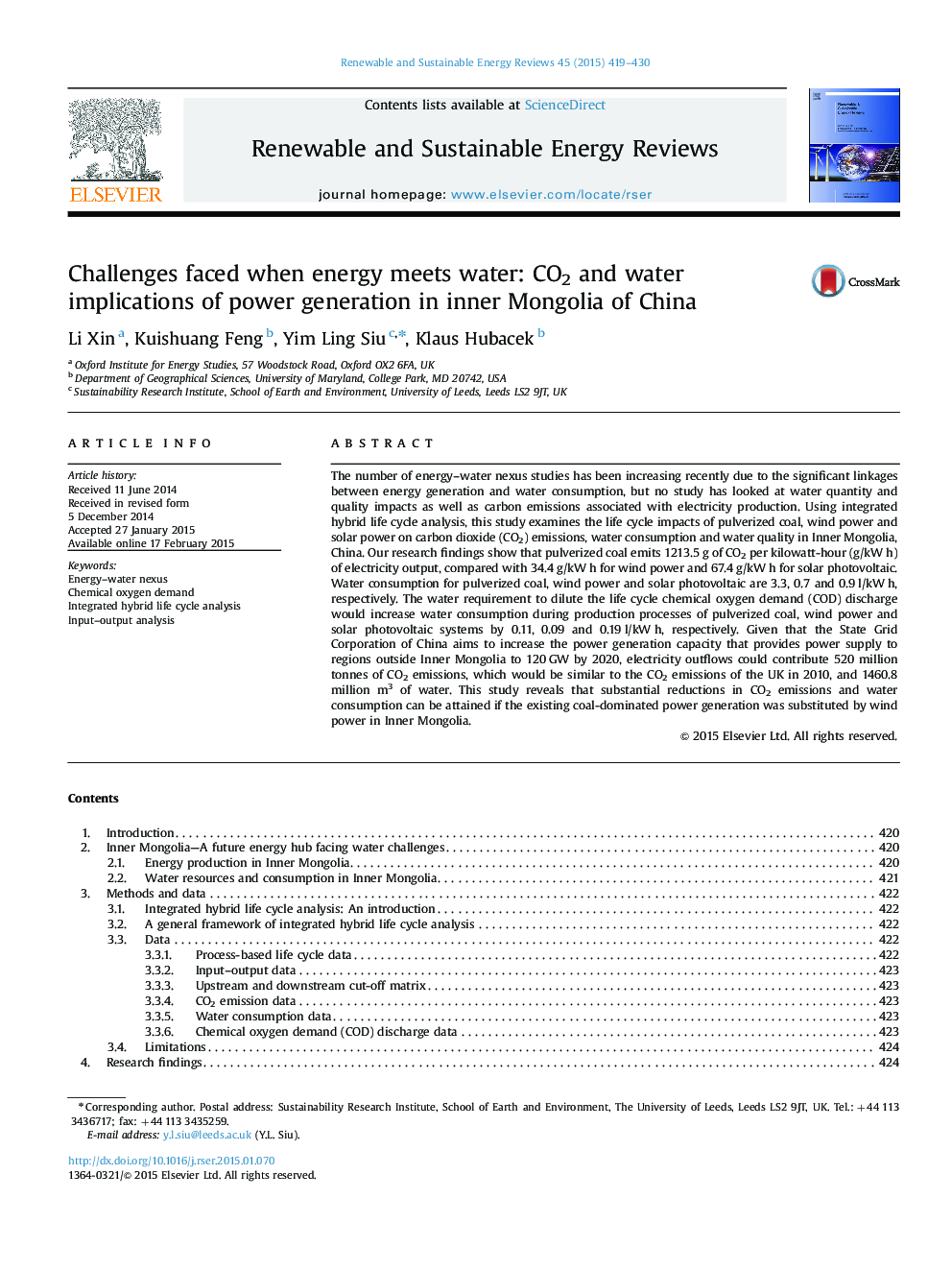| Article ID | Journal | Published Year | Pages | File Type |
|---|---|---|---|---|
| 1750059 | Renewable and Sustainable Energy Reviews | 2015 | 12 Pages |
The number of energy–water nexus studies has been increasing recently due to the significant linkages between energy generation and water consumption, but no study has looked at water quantity and quality impacts as well as carbon emissions associated with electricity production. Using integrated hybrid life cycle analysis, this study examines the life cycle impacts of pulverized coal, wind power and solar power on carbon dioxide (CO2) emissions, water consumption and water quality in Inner Mongolia, China. Our research findings show that pulverized coal emits 1213.5 g of CO2 per kilowatt-hour (g/kW h) of electricity output, compared with 34.4 g/kW h for wind power and 67.4 g/kW h for solar photovoltaic. Water consumption for pulverized coal, wind power and solar photovoltaic are 3.3, 0.7 and 0.9 l/kW h, respectively. The water requirement to dilute the life cycle chemical oxygen demand (COD) discharge would increase water consumption during production processes of pulverized coal, wind power and solar photovoltaic systems by 0.11, 0.09 and 0.19 l/kW h, respectively. Given that the State Grid Corporation of China aims to increase the power generation capacity that provides power supply to regions outside Inner Mongolia to 120 GW by 2020, electricity outflows could contribute 520 million tonnes of CO2 emissions, which would be similar to the CO2 emissions of the UK in 2010, and 1460.8 million m3 of water. This study reveals that substantial reductions in CO2 emissions and water consumption can be attained if the existing coal-dominated power generation was substituted by wind power in Inner Mongolia.
